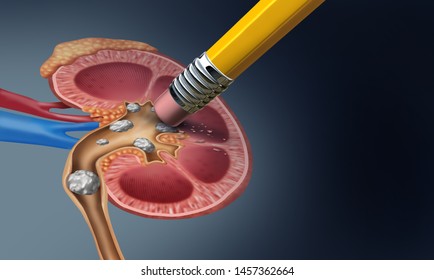What are kidney stones?
A kidney stone is an irregularly shaped solid mass or crystal that can range in size from a grain of sand to a golf ball. You may not even be aware that you have a kidney stone (or stones) depending on their size. Even little stones can be very painful as they pass through your urinary tract. The process, which might take up to three weeks, may be aided by drinking water.
A big kidney stone might become stuck in the ureter (the tube that drains urine from your kidney down to your bladder). The stone can cause bleeding and prevent urine from leaving your body if this happens. If you have a stone that won’t go away, you may need surgery. If you have kidney stones, we suggest you visit a urologist to have them removed.
Causes of kidney stones and who is more likely to get them
Kidney stones can be caused by a variety of circumstances. These are some of them:
- Including the things that cause the stones in one’s diet (phosphate, for example, is in meat, fish, beans, and other protein-rich foods).
- Having a history of kidney stones in your family.
- Having a urinary tract obstruction.
- Not drinking enough water
Certain medical conditions such as the ones stated below increase your chance to develop kidney stones:
- Hypercalciuria, it is a condition in which the body produces too much calcium.
- Blood pressure that is too high.
- Cystic fibrosis and gout.
- Irritable bowel syndrome and chronic diarrhea.
- Parathyroid disease.
- Cysts in the kidneys.
Symptoms:
Some of the symptoms that indicate that you may have relatively large kidney stones are as follows:
- Pain while urinating
- Blood in your urine
- Sharp pain in your back or lower abdomen
- Nausea and vomiting
If you have small kidney stones you may not experience any symptoms, but over time the size of the kidney stones may increase.
How are kidney stones removed?
Shock wave lithotripsy is one therapy option. Shock waves are used to break up kidney stones into small fragments in this procedure. The little particles of the kidney stone will flow through your urinary tract and out of your body with your urine after the therapy. This procedure takes 45 minutes to an hour and maybe performed under general anesthesia, meaning you will be sleeping and unable to feel pain.
Ureteroscopy is another therapy option. This procedure is performed under general anesthesia as well. To find and remove the stone, the doctor uses a long instrument shaped like a tube, or to find and shatter the stone into little pieces, the doctor uses a long tool fashioned like a tube. The doctor may be able to remove the stone if it is little. It may be necessary to break it into pieces if it is too huge. A laser will be used to break the stone into small enough bits to travel through your urinary tract in this scenario.
In rare circumstances, percutaneous nephrolithotomy surgery is required to remove a kidney stone. A tube will be placed directly into your kidney during surgery to remove the stone. To recuperate from this treatment, you will need to stay in the hospital for two to three days.
Should you see a doctor?
If you are experiencing any of the symptoms of kidney stones and live in Lahore, we suggest you visit only the Best urologist in Lahore immediately, because if left untreated the pain may grow worse and some people have reported that kidney stones are the most painful things that they have ever experienced.
Also Read: Top 50 Cartoons, Anime And Manga To Watch For Everyone


